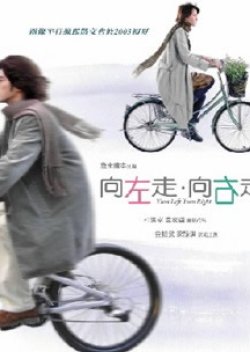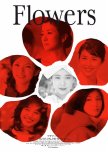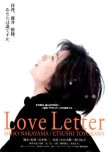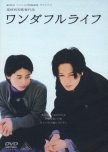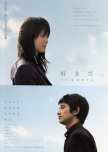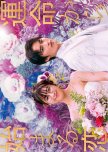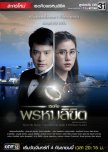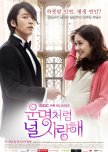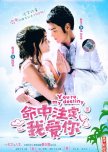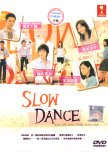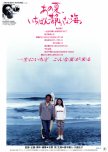
In both movies Takeshi Kaneshiro is looking for the girl he hopelessely loves, and anyway, I really liked both ! The music was also quite similar...
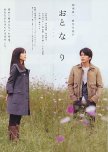
Both stories are about a man and a woman who live next to each other without being aware of it...they are so close and yet so far..
Turn Left, Turn Right takes more of a romantic-comedy approach while Oto-na-ri is more of a slow romantic..
Turn Left, Turn Right takes more of a romantic-comedy approach while Oto-na-ri is more of a slow romantic..

Both talk about a man and a woman crossing paths but never meeting. This one is more calm and subtle.

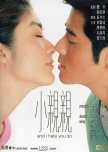
The third collaboration between Kelly Chan and Aaron Kwok yields probably their best pairing, though not their best film by far. Luna Ng is a popular newspaper columnist who makes an enemy of DJ Cheung Yung when she attempts to block his purchase of a used vinyl record. Cheung Yung is a lover of old vinyl and uses them on his popular radio show, where he plays old tunes and sometimes gives ill-advised romantic advice. Luna wanted that record because it was a gift to her first love and the shock and dismay over seeing it in a used bin cause her to wish to possess it again. The two begin to spar, she in her column and he on his radio show.
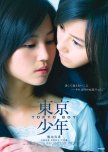
Minato is a young girl who was traumatized at a young age by being abandoned by her parents and left with her senile grandmother. She frequently corresponds with a pen-pal named Night, a boy about the same age as her that she's never actually seen in person. Although Minato and Night are very different - Minato is upbeat while Night is brooding, they get along anyway and she regularly updates him on the happenings in her daily life. Minato is even willing to confide in Night that she's falling in love with a boy she's recently met named Sho.
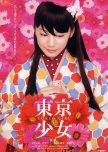
Miho, a high school student, refuses to approve of her widowed mother's potential husband when they meet each other at a restaurant. As she flounces out of the restaurant, she drops her cell phone. At the moment there is an earthquake, and she drops her cell phone down a staircase. The phone is found by Tokijiro, a boy that lives in 1912
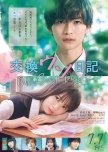
Produced and directed by Johnnie To and Wai Ka Fai, the film stars Takeshi Kaneshiro and Gigi Leung. The story is based on the book A Chance of Sunshine by Jimmy Liao, who makes a cameo appearance in the film. It is also the first Chinese-language Asian film ever from Warner Bros.
The original graphic novel is now sold under the name "Turn left, turn right" and consists of a series of detailed cartoon images, with a small amount of text in a diary style. The film has managed to include every single image in the book with a high level of accuracy, although some are fleeting.
Leung plays a translator, and Kaneshiro plays a violinist who lives parallel lives and appears to be perfect for each other, but somehow fate seems to keep them apart.
The original graphic novel is now sold under the name "Turn left, turn right" and consists of a series of detailed cartoon images, with a small amount of text in a diary style. The film has managed to include every single image in the book with a high level of accuracy, although some are fleeting.
Leung plays a translator, and Kaneshiro plays a violinist who lives parallel lives and appears to be perfect for each other, but somehow fate seems to keep them apart.

Produced and directed by Johnnie To and Wai Ka Fai, the film stars Takeshi Kaneshiro and Gigi Leung. The story is based on the book A Chance of Sunshine by Jimmy Liao, who makes a cameo appearance in the film. It is also the first Chinese-language Asian film ever from Warner Bros.
The original graphic novel is now sold under the name "Turn left, turn right" and consists of a series of detailed cartoon images, with a small amount of text in a diary style. The film has managed to include every single image in the book with a high level of accuracy, although some are fleeting.
Leung plays a translator, and Kaneshiro plays a violinist who lives parallel lives and appears to be perfect for each other, but somehow fate seems to keep them apart.
The original graphic novel is now sold under the name "Turn left, turn right" and consists of a series of detailed cartoon images, with a small amount of text in a diary style. The film has managed to include every single image in the book with a high level of accuracy, although some are fleeting.
Leung plays a translator, and Kaneshiro plays a violinist who lives parallel lives and appears to be perfect for each other, but somehow fate seems to keep them apart.
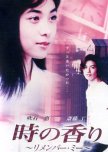
Produced and directed by Johnnie To and Wai Ka Fai, the film stars Takeshi Kaneshiro and Gigi Leung. The story is based on the book A Chance of Sunshine by Jimmy Liao, who makes a cameo appearance in the film. It is also the first Chinese-language Asian film ever from Warner Bros.
The original graphic novel is now sold under the name "Turn left, turn right" and consists of a series of detailed cartoon images, with a small amount of text in a diary style. The film has managed to include every single image in the book with a high level of accuracy, although some are fleeting.
Leung plays a translator, and Kaneshiro plays a violinist who lives parallel lives and appears to be perfect for each other, but somehow fate seems to keep them apart.
The original graphic novel is now sold under the name "Turn left, turn right" and consists of a series of detailed cartoon images, with a small amount of text in a diary style. The film has managed to include every single image in the book with a high level of accuracy, although some are fleeting.
Leung plays a translator, and Kaneshiro plays a violinist who lives parallel lives and appears to be perfect for each other, but somehow fate seems to keep them apart.

